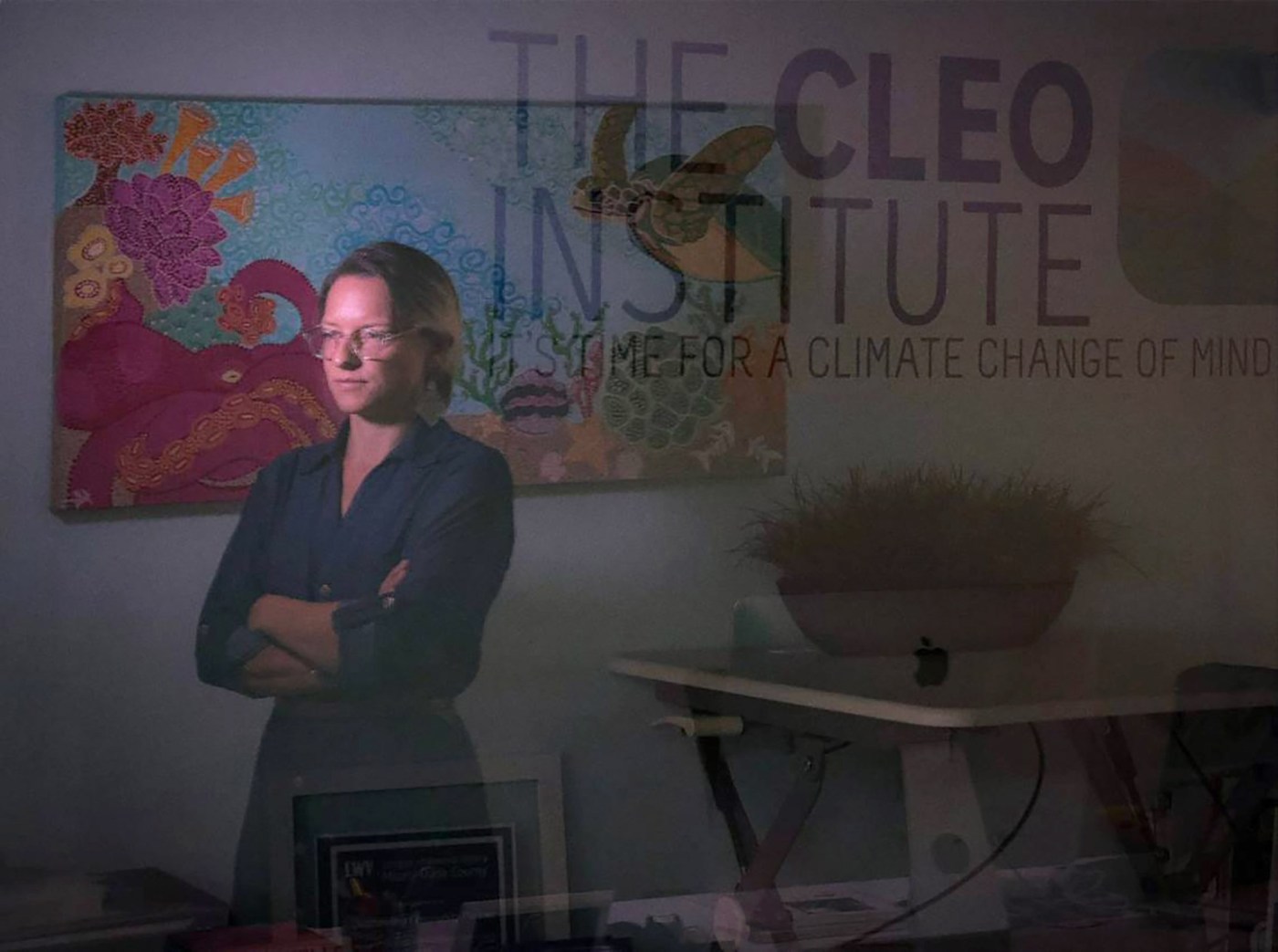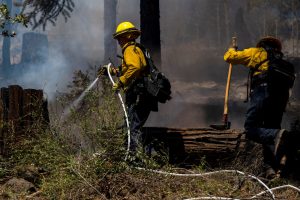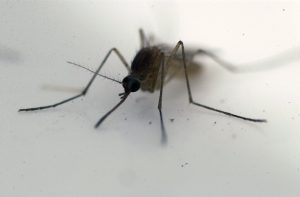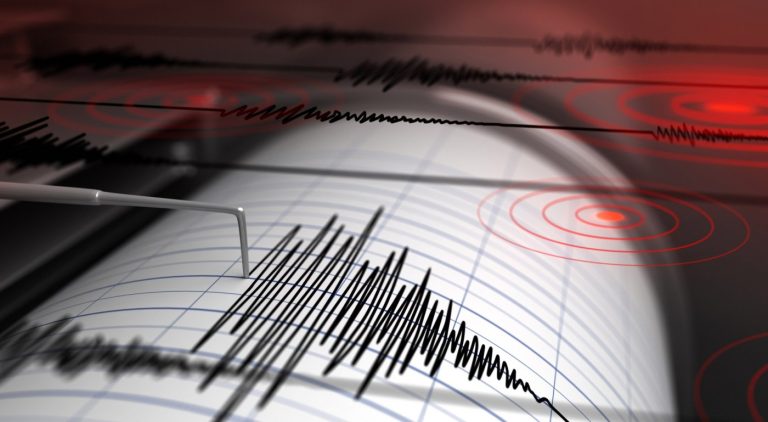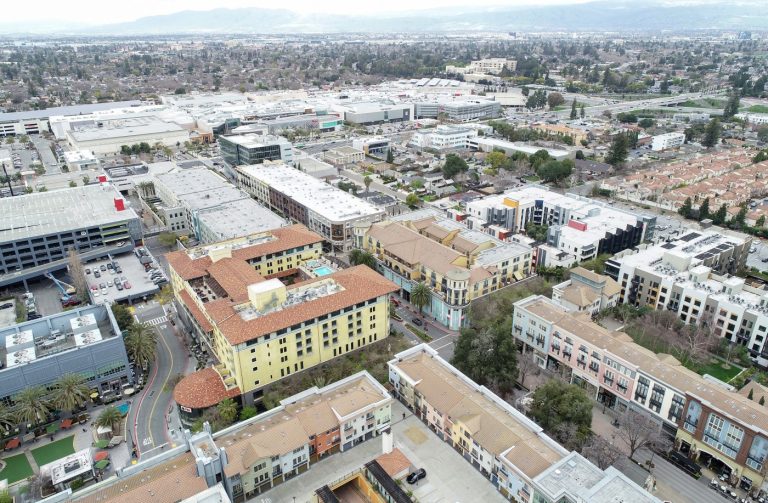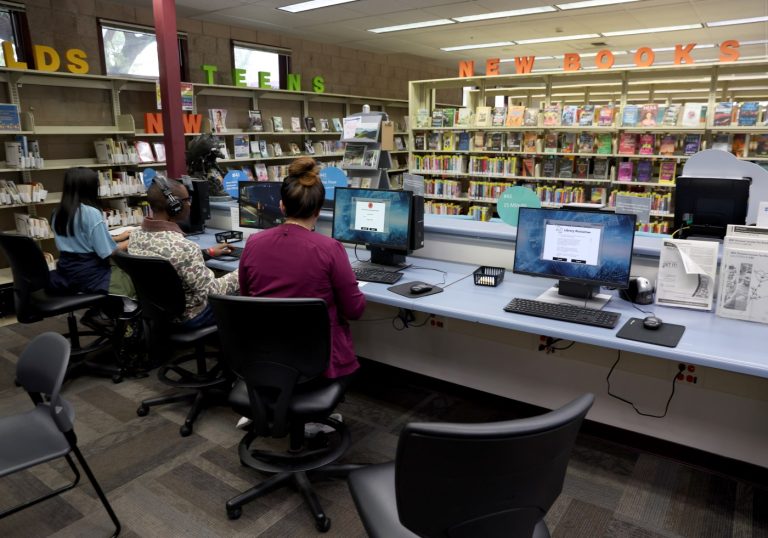Claire Grunewald | (TNS) Miami Herald
MIAMI — Flooding tides. Soaring temperatures. Even species disappearing, like a rare cactus declared in July forever “extirpated” from the Florida Keys. Many troubling signs of climate change in South Florida are visible — but one that affects a growing number of people is not.
It’s called climate anxiety, a fear of what the future may hold in a warming world.
It hit Olivia Collins not long ago, The wave of worry surprised her since she’s immersed in the subject from working at Miami’s CLEO institute, which is dedicated to climate education and advocacy. The unsettling feeling suddenly washed over her after she read “The Light Pirate,” a novel set in near-future Florida about a child born out of a devastating hurricane who has to navigate a world undergoing frightening change.
“I’ve been with CLEO for seven years and never felt climate anxiety, but it hit me like a ton of bricks back in the spring,’’ Collins said. “After I read that book, I was seeking my own personal climate therapist through the climate psychology network. It felt too real. It hit this nerve so deep down, and I can’t undo it.”
Some may scoff, perhaps the same skeptics of science showing the environmental already changing, but academic researchers and practicing psychologists have identified climate anxiety as an increasingly common stressor.
Experts at Yale University define it this way: distress about climate change and its impacts on the landscape and human existence. It can manifest as intrusive thoughts or troubled feelings about the future of the world. Also called “eco-anxiety,” it can take the form of “eco-guilt,” a feeling of not doing enough personally, or even “eco-rage,” an elevated anger that everybody else isn’t doing enough to deal with looming threats.
Worries about what rising temperatures and seas will do to the world are increasingly common, researchers have found, particularly among younger people. In a 2021 study in The Lancet surveying 10,000 youths in several countries, including America, the majority of respondents said they were worried about climate change, while more than 50% reported feeling sad, anxious or guilty. More than 45% said their feelings about climate change were strong enough to negatively affected their daily lives.
Other measures suggest a rise in people struggling to cope with climate concerns. In South Florida — ground zero for the threat of sea rise and smack in the middle of hurricane alley — the website Zencare shows 11 therapists now listing “climate anxiety” treatment as part of their practices. On a global scale, worldwide Google searches for “climate anxiety” or “eco-anxiety” increased by 4,590% from 2018 to 2023, according to a report by Time.
Putting a number to clinically serious anxiety cases is difficult. But in a study published in the Yale Climate Change Communication program In 2022, researchers asked a group of Americans aged 18 and older how often they feel nervous, depressed or bothered by global warming over a period of two weeks. Using a widely accepted psychological measure, their findings suggested that 3% of the adult population could be experiencing potentially serious levels of anxiety due to climate change.
The researchers also found out that Hispanic/Latino adults are more likely to experience high levels of climate anxiety, while younger members of Gen Z, Millennial and Gen X generations are experiencing higher rates compared to Baby Boomers and older people. That hardly seems surprising since scientists predict younger generations will likely see more profound changes if current trends continue.
‘An emerging field’
The issue isn’t new but has only recently began entering mainstream conversation. More than a decade ago, a community of mental health practitioners first formed what it called the Climate Psychology Alliance focused on the complicated emotions surrounding the climate crisis. They also built a directory of therapists prepared to work with clients on the issue.
Brittany Rivers, one of two climate-aware therapists in the state listed on the alliance directory, now offers services like mental health therapy, nature based therapy and hosts Climate Cafes online, which are support groups for those struggling with climate distress.
Rivers, who is based in Gainesville, said they haven’t had a lot of people reach out specifically just for climate anxiety but it’s usually mixed in with other concerns — perhaps because it remains what Rivers called “an emerging field.” Clients, who Rivers said tend to be more “politically informed,” are sometimes surprised to know, “‘Oh, I can ask for help for that.’ Like I can actually go to therapy and get support.”
A lot of Rivers’ motivation to work with the climate-anxious comes from the therapist’s own struggles with the issue and grief related to environmental loss.
“I would have loved to have been able to go to a provider that knew about this and cared about it and wanted to support me, or to have a community space,” Rivers said. “I definitely had those feelings of isolation with what I was experiencing.”
A new focus for advocates
Outside of the healthcare field, climate advocacy organizations also are beginning to include mental health resources as a part of outreach efforts.
The Climate Mental Health Network, a national organization, is one of them. Elissa Teles Muñoz of Miami is one of its K-12 programming leads. She researches how teachers can acknowledge the emotions that come with discussing the implications of climate change in the classroom. She said young people in South Florida see the effects in real time, in the form of coastal flooding and hurricanes, which can provoke not only questions but an array of responses.
“In order to have responsible climate education, you need to be addressing emotions that arise within students in an appropriate way,” Muñoz said.
Muñoz, 24, said she began having strong emotions triggered by climate change herself around 2018, when the IPCC Special Report about global warming came out. The report warned about rapidly increasing consequences of global warming and how humans are contributing to the speed of changes. She recalled feeling anxious and depressed, unsure of how to handle her emotions.
Focusing on solutions or at least ways to delay or reduce impacts can help ease the anxiety, she said.
Citizens Climate Lobby, an international environment group based in California, also offers educational materials for those wanting to start climate conversations in their community. The resources include a climate anxiety counseling booth inspired by the iconic Peanuts comic strip — specifically, a running gag involving a character named Lucy offering psychiatric counseling out of a converted lemonade stand
The group also offers step-by-step conversation guides on how to communicate and engage with anyone looking for help with their climate anxiety. The guides give examples of conversation starters and topics to avoid. It also offers support and resilience teams to help people working on climate change awareness campaigns.
“Climate change advocacy can be deeply rewarding… yet it can also be stressful and exhausting,” according to its website.
“[The resources show that] they’re not alone and not alone in their suffering and grieving,” said Solemi Hernandez, a Naples resident and CCL’s southeast regional director.
Social media an outlet
In the digital age, people dealing with the emotions surrounding climate change also have turned to a familiar outlet: social media.
On the Reddit anxiety thread, which has nearly 700,000 members, there are several discussions focused on climate change and environmental distress. Some threads talk about feeling scared or hopeless about climate change and what the future may look like.
California-based environmentalist and content creator Isaias Hernandez has been talking about this issue for years on social media. The 28-year-old is behind the @queerbrownvegan Instagram account, which touts over 100,000 followers. Hernandez has shared blog posts highlighting the emotions surrounding climate change for years.
One of his posts from 2020 explains the climate emotion scale, which covers a range of feelings that arise from the climate crisis. The emotions range from “solastalgia,” an existential environmental-induced distress, to “eco-guilt,” the feeling that you should be contributing more to help protect the Earth. Three years later during wildfire that swept Canada, he said there was a huge jump in traffic on eco-anxiety posts on his websites.
Hernandez believes climate emotions can be nuanced and that socioeconomic and political factors play a role in the way people might react. For example, he said he grew up in poverty with a father working as a landscape gardener.. With basic concerns like making a living, he said he didn’t have time to worry about helping the environment — unlike the affluent families who his father worked for.
“In my younger years in college I first learned about the term eco-anxiety and I laughed, “ he said in an interview with The Miami Herald. “I thought at the time it was a very privileged thing, and I realized it was not so much. It’s a very shared common response to people.”
Researchers have validated his take, finding climate concerns can vary widely depending on socioeconomic status. Yale research scientist Anthony Leiserowitz said in an article explaining climate anxiety that those who can afford to have things like air conditioners in their cars and homes will worry less about how something like higher temperatures might impact their daily lives.
The Environmental Protection Agency found that communities of low-income and with higher populations of people of color, have neighborhoods with higher temperatures compared to nearby neighborhoods with higher incomes and less diversity. It also found that low-income households tend to live in less energy-efficient homes that are more expensive to cool, making it harder to deal with the heat.
Hernandez said his audience online are typically high school or college students and it’s obvious to him that younger generation facing the brunt of the climate change also have heightened emotions about it.
“They have told me that they’ve grown up with climate anxiety since they were a kid,” Hernandez said.
Bigger than one person
In South Florida, younger people looking to be in a space to share their emotions might turn to the CLEO institute’s GenCLEO group, which aims to educate younger generations on the changing climate.
Luke Norris, a University of Miami ecosystem science and policy student, a 21-year-old GenCLEO member, grew up in California with a front-row seat to droughts and wildfires. In 2020, his sibling lost their home in a town called Boulder Creek to one of those fires. The experience pushed Norris towards climate advocacy.
With fellow CLEO staffers, Norris is working on the initial stages of what they hope could be a first-of-its-kind climate anxiety research center focusing on education and helping those with symptoms of climate anxiety.
One key to dealing with anxiety, he believes, is underlining that climate change is a challenge for humankind, not any one person. We’re all in it together.
“When I’ve gone to therapy and talked about climate anxiety it’s very individual-centered and doesn’t help with the root of the problem,” he said. “You don’t want to feel that you’re alone.”
©2024 Miami Herald. Visit at miamiherald.com. Distributed by Tribune Content Agency, LLC.
